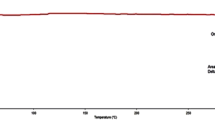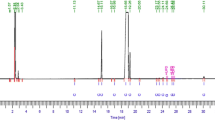Abstract
In this study, we developed an optimized formulation of a breviscapine lipid emulsion (BLE) and evaluated the physicochemical properties and in vivo pharmacokinetics of BLE in rats. For the preparation of the lipid emulsion, soybean oil and oleic acid were used as the oil phase, lecithin and poloxamer 188 as surfactants and glycerol as co-surfactant. An optimized formulation consisting of soybean oil (10.0%), oleic acid (0.9%), lecithin (1.5%), poloxamer 188 (0.4%), and glycerol (2.25%) was selected. The results showed that the average particle size, polydispersity index, and zeta potential of the optimized formulation were 183.5 ± 5.5 nm, 0.098 ± 0.046, and −35.0 ± 2.5 mV, respectively. The BLE was stable for at least three month at room temperature. After a single intravenous dose of 4 mg/kg to rats, the AUC of scutellarin from the lipid emulsion was about 1.5-fold higher than that of the commercial product (breviscapine injection). In conclusion, the optimized formulation of BLE showed positive results over the commercial product in terms of the physicochemical properties and pharmacokinetics of BLE in rats.
Similar content being viewed by others
References
Bunjes, H., Lipid nanoparticles for the delivery of poorly water-soluble drugs. J. Pharm. Pharmacol., 62, 1637–1645 (2010).
Cui, W., Li, X., Zhou, S., and Weng, J., Investigation on process parameters of electrospinning system through orthogonal experimental design. J. Appl. Polym. Sci., 103, 3105–3112 (2007).
Das, S. and Chaudhury, A., Recent advances in lipid nanoparticle formulations with solid matrix for oral drug delivery. AAPS PharmSciTech, 12, 62–76 (2011).
Fan, X., Liu, Q., Zhen, P., Zhang, Y., and Hu, X., Stepwise multiple regressions application in liposome orthogonal experiments. J. Chin. Pharmaceut. Sci., 16, 96–100 (2007).
Hao, X., Cheng, G., Sun, J., Zou, M., Yu, J., Zhang, S., and Cui, F., Validation of an HPLC method for the determination of scutellarin in rat plasma and its pharmacokinetics. J. Pharm. Biomed. Anal., 38, 360–363 (2005).
Hong, M. S., Lim, S. J., Lee, M. K., Kim, Y. B., and Kim, C. K., Prolonged blood circulation of methotrexate by modulation of liposomal composition. Drug Deliv., 8, 231–237 (2001).
Hu, X. M., Zhou, M. M., Hu, X. M., and Zeng, F. D., Neuroprotective effects of scutellarin on rat neuronal damage induced by cerebral ischemia/reperfusion. Acta Pharmacol. Sin., 26, 1454–1459 (2005).
Ji, C., Na, W., Fei, X., Sheng-Jun, C., and Jia-Bi, Z., Characterization, lung targeting profile and therapeutic efficiency of dipyridamole liposomes. J. Drug Target., 14, 717–724 (2006).
Kurihara, A., Shibayama, Y., Mizota, A., Yasuno, A., Ikeda, M., Sasagawa, K., Kobayashi, T., and Hisaoka, M., Lipid emulsion of palmitoylrhizoxin: effects of composition on lipolysis and biodistribution. Biopharm. Drug Dispos., 17, 331–342 (1996).
Liu, H., Yang, X.-L., Wang, Y., Tang, X.-Q., Jiang, D.-Y., and Xu, H.-B., Protective effects of scutellarin on superoxideinduced oxidative stress in rat cortical synaptosomes. Acta Pharmacol. Sin., 24, 1113–1117 (2003).
Lu, J., Cheng, C., Zhao, X., Liu, Q., Yang, P., Wang, Y., and Luo, G., PEG-scutellarin prodrugs: Synthesis, water solubility and protective effect on cerebral ischemia/reperfusion injury. Eur. J. M ed. Chem., 45, 1731–1738 (2010).
Mulik, R., Mahadik, K., and Paradkar, A., Development of curcuminoids poly(butyl) cyanoacrylate nanoparticles: Physicochemical characterization and stability study. Eur. J. Pharm. Sci., 37, 395–404 (2009).
Müller, R. H., Mäder, K., and Gohla, S., Solid lipid nanoparticles (SLN) for controlled drug delivery — a review of the state of the art. Eur. J. Pharm. Biopharm., 50, 161–177 (2000).
Onuki, Y., Morishita, M., and Takayama, K., Formulation optimization of water-in-oil-water multiple emulsion for intestinal insulin delivery. J. Control. Release, 97, 91–99 (2004).
Porter, C. J. H., Trevaskis, N. L., and Charman, W. N., Lipids and lipid-based formulations: optimizing the oral delivery of lipophilic drugs. Nat. Rev. Drug Discov., 6, 231–248 (2007).
Reddy, L. H. and Murthy, R. S. R., Influence of polymerization technique and experimental variables on the particle properties and release kinetics of methotrexate from poly (butylcyanoacrylate) nanoparticles. Acta Pharm., 54, 103–118 (2004).
Shi, S., Xu, L., Mao, Z., Li, W., Ye, J., and Gao, M., Study on physicochemical properties and influence factors on stability of breviscapine. China Journal of Chinese Materia Medica, 34, 843–847 (2009).
Society of Toxicology (SOT), Guiding principles in the use of animals in toxicology. www.toxicology.org/AI/FA/guidingprinciples.pdf (2008).
Souto, E. B. and Muller, R. H., Lipid nanoparticles: effect on bioavailability and pharmacokinetic changes. Handb. Exb. Pharmacol., 197, 115–141 (2010).
Tang, J., Wei, H., Liu, H., Ji, H., Dong, D., Zhu, D., and Wu, L., Pharmacokinetics and biodistribution of itraconazole in rats and mice following intravenous administration in a novel liposome formulation. Drug Deliv., 7, 223–230 (2010).
Wang, M., Xie, C., Cai, R. L., Li, X. H., Luo, X. Z., and Qi, Y., Studies on antioxidant activities of breviscapine in the cell-free system. Am. J. Chin. Med., 36, 1199–1207 (2008).
Wang, M. Y., Sato, H., Adachi, I., and Horikoshi, I., Optimization of the formulation design of chitosan microspheres containing cisplatin. J. Pharm. Sci., 85, 1204–1210 (1996).
Wenli, L., Jianxin, G., Jin, L., Luosheng, H., and Qineng, P., Distribution of liposomal breviscapine in brain following intravenous injection in rats. Int. J. Pharm., 306, 99–106 (2005).
Wenli, L., Jianxin, G., Qineng, P., Yunmei, S., and Jin, L., Comparative pharmacokinetics of breviscapine liposomes in dogs, rabbits and rats. Int. J. Pharm., 359, 118–122 (2008).
Xiong, F., Xiong, C., Ge, L., Chen, Y.-J., Wang, H., Gu, N., and Zhu, J.-B., Preparation, characterization, and biodistribution of breviscapine proliposomes in heart. J. Drug Target., 17, 408–414 (2009).
Xiong, F., Wang, H., Geng, K.-K., Gu, N., and Zhu, J.-B., Optimized preparation, characterization and biodistribution in heart of breviscapine lipid emulsion. Chem. Pharm. Bull., 58, 1455–1460 (2010).
Xiong, F., Wang, H., Chen, Y.-J., Geng, K.-K., Gu, N., and Zhu, J.-B., Characterization, biodistribution and targeting evaluation of breviscapine lipid emulsions following intravenous injection in mice. Drug Deliv., 18, 159–165 (2011a).
Xiong, F., Xiong, C., Yao, J., Chen, X., and Gu, N., Preparation, characterization and evaluation of breviscapine lipid emulsions coated with monooleate-PEG-COOH. Int. J. Pharm., 421, 275–282 (2011b).
Yiming, L., Wei, H., Aihua, L., and Fandian, Z., Neuroprotective effects of breviscapine against apoptosis induced by transient focal cerebral ischaemia in rats. J. Pharm. Pharmacol., 60, 349–355 (2008).
Zhang, J., Li, X. S., and Zhang, W. D., Progress in study of chemical constituents and pharmacological activity of breviscarpus. J. Pharm. Pract., 20, 103–107 (2002).
Zhou, Q. S., Zhao, Y. M., Bai, X., Li, P. X., and Ruan, C. G., Effect of new-breviscapine on fibrinolysis and anticoagulation of human vascular endothelial cells. Acta Pharmacol. Sin., 13, 239–242 (1992).
Author information
Authors and Affiliations
Corresponding authors
Rights and permissions
About this article
Cite this article
Wei, L., Li, G., Yan, YD. et al. Lipid emulsion as a drug delivery system for breviscapine: Formulation development and optimization. Arch. Pharm. Res. 35, 1037–1043 (2012). https://doi.org/10.1007/s12272-012-0611-z
Received:
Revised:
Accepted:
Published:
Issue Date:
DOI: https://doi.org/10.1007/s12272-012-0611-z




